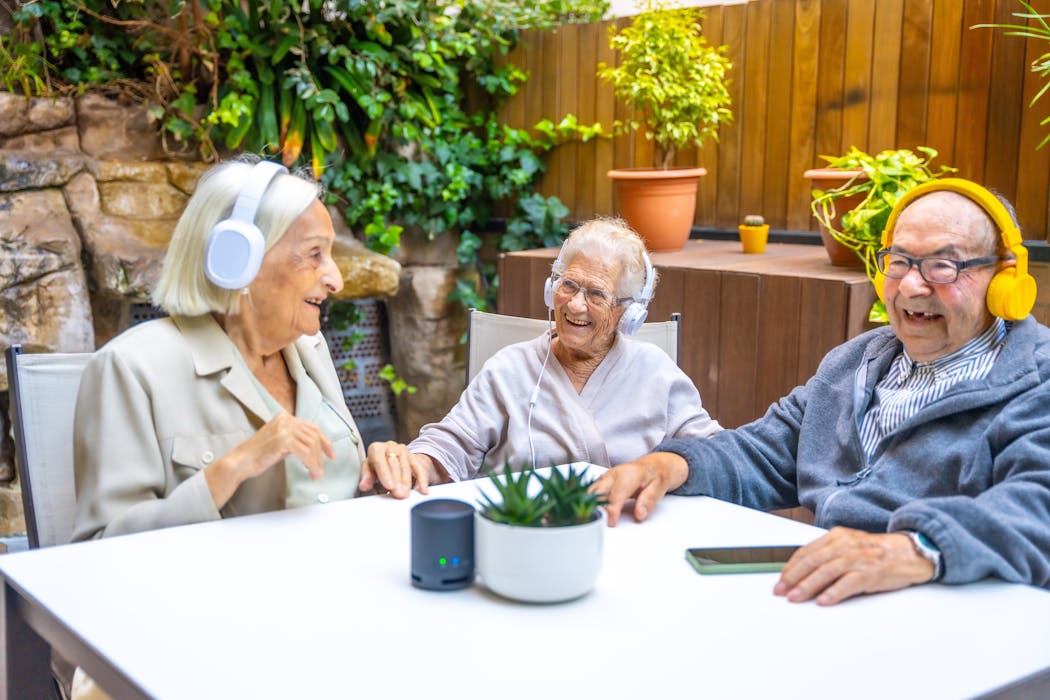Assistive technology refers to any device, equipment, or system that helps individuals with disabilities perform tasks that they would otherwise have difficulty or inability to do. It is designed to improve accessibility and enhance the quality of life for people with disabilities. Accessibility is crucial for individuals with disabilities as it allows them to participate fully in society, access education and employment opportunities, and engage in social interactions. Assistive technology plays a vital role in achieving accessibility by providing individuals with the tools they need to overcome barriers and live more independently.
Assistive technology can greatly improve accessibility for people with disabilities in various ways. For individuals with mobility impairments, devices such as wheelchairs, walkers, and prosthetics enable them to move around more easily and independently. Hearing aids and cochlear implants help individuals with hearing impairments to hear sounds and communicate effectively. Vision aids such as magnifiers, screen readers, and braille displays assist individuals with visual impairments in reading and accessing information. Communication devices such as speech-to-text software and augmentative and alternative communication (AAC) devices enable individuals with speech impairments to communicate effectively. Cognitive aids such as reminder systems and task organizers help individuals with cognitive impairments manage their daily activities. Overall, assistive technology empowers individuals with disabilities by breaking down barriers and enabling them to participate fully in all aspects of life.
The history of assistive technology and its evolution
The use of assistive technology can be traced back to ancient times when simple tools were created to assist individuals with disabilities. For example, wooden crutches were used by people with mobility impairments to aid in walking. Over time, technological advancements have greatly influenced the development of assistive technology, leading to more sophisticated devices that are tailored to meet the specific needs of individuals with disabilities.
One key milestone in the evolution of assistive technology was the invention of the typewriter in the 19th century. This device allowed individuals with physical disabilities, such as limited hand function, to write and communicate more easily. The typewriter paved the way for the development of communication devices and assistive technologies that we see today.
The advent of computers and the internet in the late 20th century revolutionized assistive technology. The development of screen readers, speech recognition software, and alternative input devices opened up new possibilities for individuals with disabilities to access information and communicate effectively. These technological advancements continue to shape the field of assistive technology, with ongoing research and development focused on creating more innovative and user-friendly devices.
Types of assistive technology devices and their functions
Assistive technology encompasses a wide range of devices that cater to different types of disabilities. Here are some examples of assistive technology devices and their functions:
1. Mobility aids: Wheelchairs, walkers, canes, and mobility scooters are examples of mobility aids that help individuals with mobility impairments move around more easily. These devices provide support and stability, allowing individuals to maintain their independence and engage in various activities.
2. Hearing aids and cochlear implants: Hearing aids amplify sounds and improve hearing for individuals with hearing impairments. Cochlear implants are surgically implanted devices that stimulate the auditory nerve directly, providing a sense of sound for individuals with severe hearing loss or deafness.
3. Vision aids: Magnifiers, screen readers, braille displays, and electronic glasses are examples of vision aids that assist individuals with visual impairments in reading, accessing information, and navigating their surroundings.
4. Communication devices: Speech-to-text software, AAC devices, and eye-tracking systems are examples of communication devices that help individuals with speech impairments or limited communication abilities express themselves effectively.
5. Cognitive aids: Reminder systems, task organizers, and cognitive apps are examples of cognitive aids that assist individuals with cognitive impairments in managing their daily activities, improving memory, and enhancing cognitive function.
6. Prosthetics and orthotics: Prosthetic limbs and orthotic devices are used to replace or support missing or impaired body parts. These devices enable individuals with limb loss or physical disabilities to perform daily tasks and engage in physical activities.
How assistive technology is breaking physical barriers for people with disabilities
Assistive technology is revolutionizing accessibility by breaking down physical barriers for people with disabilities. Here are some examples of how assistive technology is improving accessibility in different settings:
1. Home environment: Assistive technology devices such as stairlifts, grab bars, and home automation systems enable individuals with mobility impairments to navigate their homes safely and independently. Smart home technology allows individuals to control various aspects of their home environment, such as lighting, temperature, and security, through voice commands or mobile apps.
2. Transportation: Wheelchair-accessible vehicles, ramps, and lifts make public transportation more accessible for individuals with mobility impairments. GPS navigation systems and mobile apps provide real-time information on accessible routes and transportation options.
3. Workplaces: Assistive technology devices such as ergonomic keyboards, adjustable desks, and speech recognition software enable individuals with physical disabilities or repetitive strain injuries to perform their job tasks more comfortably and efficiently. Screen readers, magnifiers, and braille displays assist individuals with visual impairments in accessing information and using computers.
4. Education: Assistive technology plays a crucial role in ensuring equal access to education for students with disabilities. Devices such as text-to-speech software, speech recognition software, and electronic braille displays help students with visual impairments or learning disabilities access educational materials and participate in classroom activities. AAC devices and communication apps facilitate communication for students with speech impairments.
5. Public spaces: Assistive technology devices such as automatic doors, accessible elevators, and tactile paving improve accessibility in public spaces for individuals with disabilities. Hearing loop systems and captioning services in theaters and public venues enhance the experience for individuals with hearing impairments.
The impact of assistive technology on independent living cannot be overstated. By providing individuals with the tools they need to overcome physical barriers, assistive technology enables them to live more independently and engage in activities that were previously inaccessible. This promotes a sense of empowerment, autonomy, and inclusion for individuals with disabilities.
The impact of assistive technology on education and employment opportunities
Assistive technology has a significant impact on education and employment opportunities for individuals with disabilities. It helps level the playing field by providing access to information, communication, and learning tools that enable individuals to succeed academically and professionally.
In the education sector, assistive technology plays a crucial role in ensuring equal access to education for students with disabilities. It enables students with visual impairments or learning disabilities to access educational materials, participate in classroom activities, and communicate effectively. For example, text-to-speech software allows students with visual impairments to listen to textbooks and other written materials, while speech recognition software enables students with physical disabilities or limited hand function to dictate their thoughts and complete written assignments. Electronic braille displays provide tactile feedback for students who are blind or have low vision, allowing them to read and write in braille.
Assistive technology also enhances access to educational resources through online platforms and digital learning tools. For example, online courses can be made accessible through closed captioning, transcripts, and screen reader compatibility. Educational apps and software can be designed with accessibility features that cater to the needs of students with disabilities.
In the workplace, assistive technology enables individuals with disabilities to overcome barriers and perform their job tasks more effectively. It provides accommodations that allow employees with disabilities to work comfortably and efficiently. For example, ergonomic keyboards and adjustable desks help individuals with physical disabilities or repetitive strain injuries reduce discomfort and improve productivity. Screen readers, magnifiers, and braille displays assist individuals with visual impairments in accessing information and using computers. Speech recognition software allows individuals with speech impairments to dictate their thoughts and communicate effectively.
Assistive technology also opens up new employment opportunities for individuals with disabilities. It enables individuals to work remotely or access job opportunities that were previously inaccessible due to physical barriers. For example, individuals with mobility impairments can work from home using assistive technology devices such as voice-controlled computers and teleconferencing tools. This flexibility allows individuals to pursue their career goals and contribute to the workforce on an equal footing.
The role of assistive technology in communication and social interaction
Assistive technology plays a crucial role in improving communication and social interaction for individuals with disabilities. It provides tools and devices that enable individuals to express themselves effectively, connect with others, and participate in social activities.
For individuals with speech impairments or limited communication abilities, assistive technology devices such as AAC devices and speech-to-text software provide alternative means of communication. AAC devices can range from simple picture boards to sophisticated electronic devices that generate speech based on input from the user. These devices allow individuals to express their thoughts, needs, and emotions, enhancing their ability to communicate with others.
Speech-to-text software converts spoken words into written text, enabling individuals with speech impairments to communicate through written messages. This technology is particularly useful in situations where verbal communication may be challenging or impractical, such as in noisy environments or during phone conversations.
Assistive technology also facilitates communication for individuals with hearing impairments. Hearing aids amplify sounds and improve hearing, allowing individuals to participate more fully in conversations. Cochlear implants provide a sense of sound for individuals with severe hearing loss or deafness. In addition, captioning services, sign language interpreters, and video relay services help bridge the communication gap between individuals with hearing impairments and those without.
The impact of assistive technology on social inclusion cannot be underestimated. By providing individuals with the means to communicate effectively, assistive technology enables them to engage in social interactions, build relationships, and participate in community activities. This promotes a sense of belonging and reduces the social isolation often experienced by individuals with disabilities.
The benefits of assistive technology in healthcare and medical treatment
Assistive technology has numerous benefits in the healthcare sector, improving outcomes for individuals with disabilities and enhancing the delivery of medical treatment. Here are some examples of how assistive technology is improving healthcare:
1. Rehabilitation and therapy: Assistive technology devices play a crucial role in rehabilitation and therapy for individuals with disabilities. Devices such as prosthetics, orthotics, and mobility aids help individuals regain mobility and independence after an injury or surgery. Assistive technology also supports physical therapy by providing tools for exercise, balance training, and gait analysis.
2. Communication and access to healthcare information: Assistive technology devices enable individuals with disabilities to communicate effectively with healthcare providers and access healthcare information. For example, speech-to-text software allows individuals with speech impairments to communicate their symptoms and concerns during medical appointments. Screen readers and magnifiers help individuals with visual impairments read healthcare information and instructions.
3. Monitoring and management of health conditions: Assistive technology devices such as wearable sensors, smartwatches, and mobile apps enable individuals to monitor their health conditions and manage their medications more effectively. These devices provide real-time data on vital signs, activity levels, and medication reminders, helping individuals stay proactive in managing their health.
4. Independent living and home healthcare: Assistive technology devices such as home monitoring systems, medication dispensers, and telehealth platforms support independent living for individuals with disabilities. These devices enable remote monitoring of health conditions, facilitate communication with healthcare providers, and provide access to virtual consultations.
Assistive technology not only improves the quality of life for individuals with disabilities but also reduces the burden on healthcare systems. By empowering individuals to manage their health conditions more effectively and access healthcare services independently, assistive technology promotes self-care and reduces the need for frequent hospital visits.
The challenges and limitations of assistive technology
While assistive technology has made significant advancements in improving accessibility and enhancing the lives of individuals with disabilities, it still faces several challenges and limitations. These include technical challenges, cost and affordability, and user acceptance and adoption.
1. Technical challenges: Assistive technology devices often require specialized training and support to ensure proper use and maintenance. They may also face compatibility issues with existing technologies or software, making integration and interoperability a challenge. Additionally, assistive technology devices may have limitations in terms of battery life, durability, or reliability, which can impact their effectiveness and usability.
2. Cost and affordability: Assistive technology devices can be expensive, making them inaccessible for many individuals with disabilities, particularly in low-income countries or regions with limited healthcare resources. The high cost of assistive technology is often attributed to research and development costs, manufacturing processes, and limited market demand. Lack of insurance coverage or reimbursement for assistive technology devices further exacerbates the affordability issue.
3. User acceptance and adoption: The successful implementation of assistive technology relies on user acceptance and adoption. Individuals with disabilities may face barriers in accessing information about available assistive technology options or receiving proper training on how to use them effectively. Lack of awareness, stigma, or resistance to change can also hinder the acceptance and adoption of assistive technology.
Addressing these challenges requires collaboration between various stakeholders, including individuals with disabilities, healthcare professionals, researchers, policymakers, and manufacturers. Efforts should be made to improve the affordability and availability of assistive technology devices through government subsidies, insurance coverage, or partnerships with private organizations. Training programs should be developed to educate individuals with disabilities on the benefits and usage of assistive technology devices. Research and development should focus on addressing technical challenges and improving the usability and effectiveness of assistive technology.
The cost of assistive technology and accessibility for all
The cost of assistive technology is a significant barrier to accessibility for many individuals with disabilities. The high price of assistive technology devices often makes them inaccessible, particularly for those in low-income countries or regions with limited healthcare resources. This lack of affordability creates a significant disparity in access to assistive technology and hinders the goal of achieving accessibility for all.
Affordability and accessibility are crucial for ensuring that individuals with disabilities can fully participate in society, access education and employment opportunities, and engage in social interactions. It is essential to address the cost issue to promote inclusivity and equal opportunities for individuals with disabilities.
Governments play a vital role in promoting affordability and accessibility by implementing policies and programs that support the provision of assistive technology devices. This can include subsidies or financial assistance programs that help individuals with disabilities afford the necessary devices. Insurance coverage for assistive technology devices can also help reduce the financial burden on individuals.
Private organizations, including manufacturers and healthcare providers, can contribute to affordability by offering lower-cost options or partnering with government agencies to provide discounted or subsidized devices. Research and development efforts should focus on creating more cost-effective solutions without compromising quality or functionality.
In addition to affordability, accessibility for all requires a comprehensive approach that addresses other barriers such as awareness, availability, and training. Efforts should be made to raise awareness about the benefits of assistive technology and educate individuals with disabilities on available options. Healthcare providers and professionals should be trained on how to assess and prescribe assistive technology, as well as how to provide ongoing support and maintenance. Additionally, there needs to be a focus on increasing the availability of assistive technology in various settings, such as schools, workplaces, and public spaces, to ensure that individuals with disabilities can fully participate in all aspects of life. By addressing these barriers, we can create a more inclusive society where assistive technology is accessible to all who need it.
Find out how Torongo Therapyplus can help you with your needs. Get in touch with us at smile@torongo.life, or call us on 02 8809 9965.































